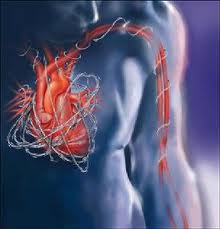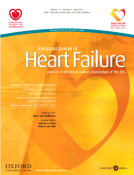导读:英国一项最新研究显示,心脏病发作对心肌组织造成的结构性损伤并非像过去认为那样是永久性的,只要能设法让心脏“休息”一下,损伤便可能得到恢复,这有助于研发治疗心力衰竭的新方法。

许多患者心脏病发作后,心肌组织会因为长时间缺血等原因而出现结构性损伤,这又会影响心脏的泵血能力,逐渐导致心力衰竭,增加死亡风险。
参与这项研究的英国帝国理工学院的切萨雷·泰拉恰诺博士说,如果是腿部肌肉受损,只要休息一段时间就会慢慢恢复,但心肌组织需要不断工作为身体输送血液,得不到休息,因此结构性损伤难以恢复,长期以来被认为是永久性的。
切萨雷和同事在新一期《欧洲心力衰竭杂志》上报告说,他们从一些有心力衰竭症状的实验鼠体内取出心脏,将其移植到其他实验鼠体内,与健康的心脏共存,这样受损的心脏既能获得血液供应,又不需要工作。结果发现,受损心脏中的一些结构性损伤自行恢复了。
比如,心脏中的心肌细胞横管系统,这是一个由许多管状纤维组成的系统,它深入心肌内部,有传递电信号的功能,可以协调所有心肌细胞同步收缩。在健康心脏中,心肌细胞横管的排列是紧凑有序的,但在受损心脏中,心肌细胞横管变得稀少且杂乱无章。本次研究发现,在受损心脏得到“休息”后,这一系统又逐渐恢复了正常状态。

Mechanical unloading reverses transverse tubule remodelling and normalizes local Ca2+-induced Ca2+release in a rodent model of heart failure
Michael Ibrahim, Manoraj Navaratnarajah, Urszula Siedlecka, Christopher Rao, Priyanthi Dias, Alexey V. Moshkov, Julia Gorelik, Magdi H. Yacoub and Cesare M. Terracciano
Aims Ca2+-induced Ca2+ release (CICR) is critical for contraction in cardiomyocytes. The transverse (t)-tubule system guarantees the proximity of the triggers for Ca2+ release [L-type Ca2+ channel, dihydropyridine receptors (DHPRs)] and the sarcoplasmic reticulum Ca2+ release channels [ryanodine receptors (RyRs)]. Transverse tubule disruption occurs early in heart failure (HF). Clinical studies of left ventricular assist devices in HF indicate that mechanical unloading induces reverse remodelling. We hypothesize that unloading of failing hearts normalizes t-tubule structure and improves CICR.
Methods and results Heart failure was induced in Lewis rats by left coronary artery ligation for 12 weeks; sham-operated animals were used as controls. Failing hearts were mechanically unloaded for 4 weeks by heterotopic abdominal heart transplantation (HF-UN). HF reduced the t-tubule density measured by di-8-ANEPPS staining in isolated left ventricular myocytes, and this was reversed by unloading. The deterioration in the regularity of the t-tubule system in HF was also reversed in HF-UN. Scanning ion conductance microscopy showed the reappearance of normal surface striations in HF-UN. Electron microscopy revealed recovery of normal t-tubule microarchitecture in HF-UN. L-type Ca2+ current density, measured using whole-cell patch clamping, was reduced in HF but unaffected by unloading. The variance of the time-to-peak of the Ca2+ transient, an index of CICR dyssynchrony, was increased in HF and normalized by unloading. The increased Ca2+ spark frequency observed in HF was reduced in HF-UN. These results could be explained by the recoupling of orphaned RyRs in HF, as indicated by immunofluorescence.
Conclusions Our data show that mechanical unloading of the failing heart reverses the pathological remodelling of the t-tubule system and improves CICR.
文献链接:https://www.biodiscover.com/news/healthcare/library/13223.html








